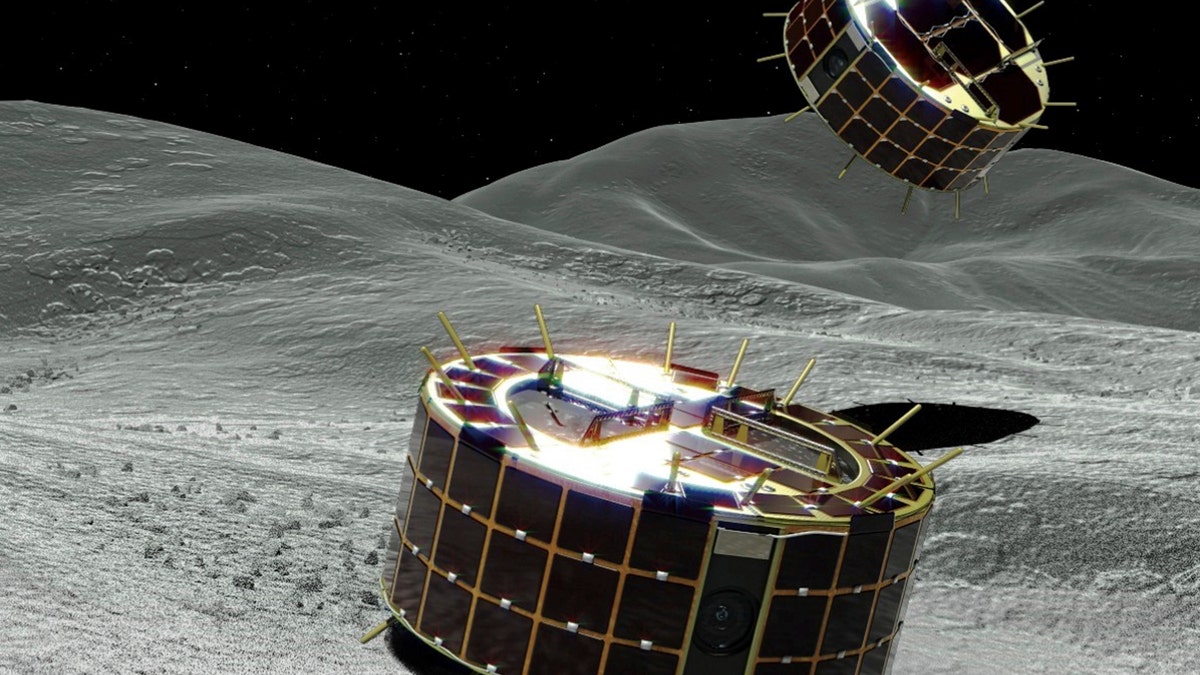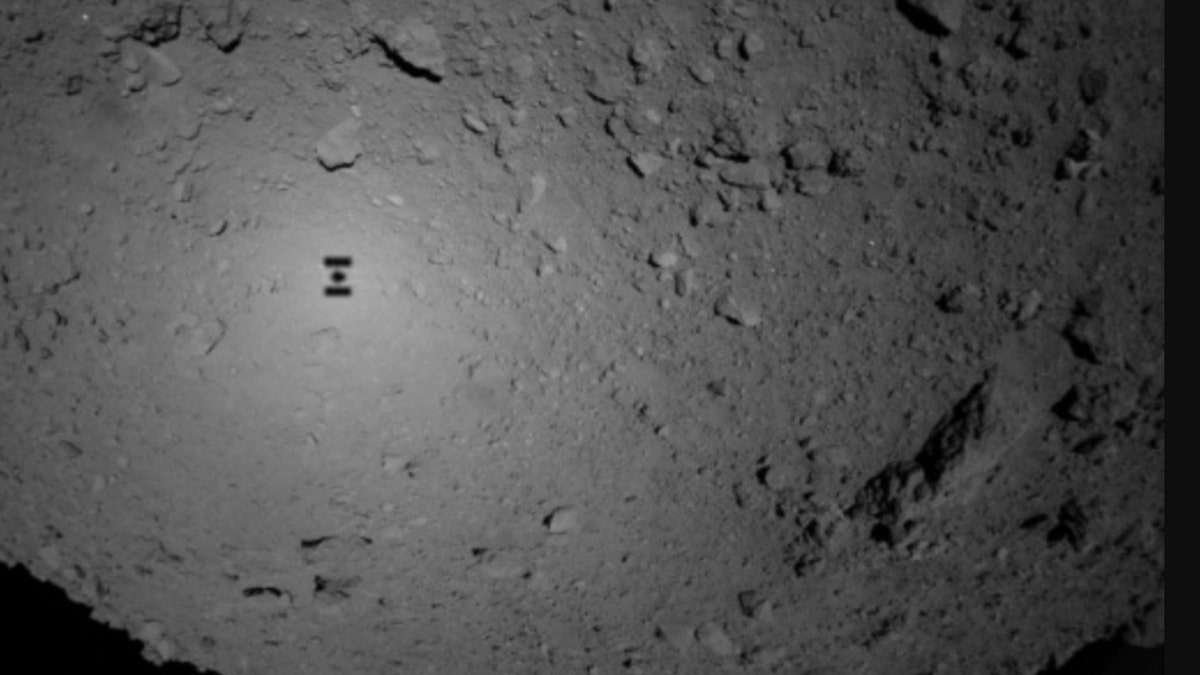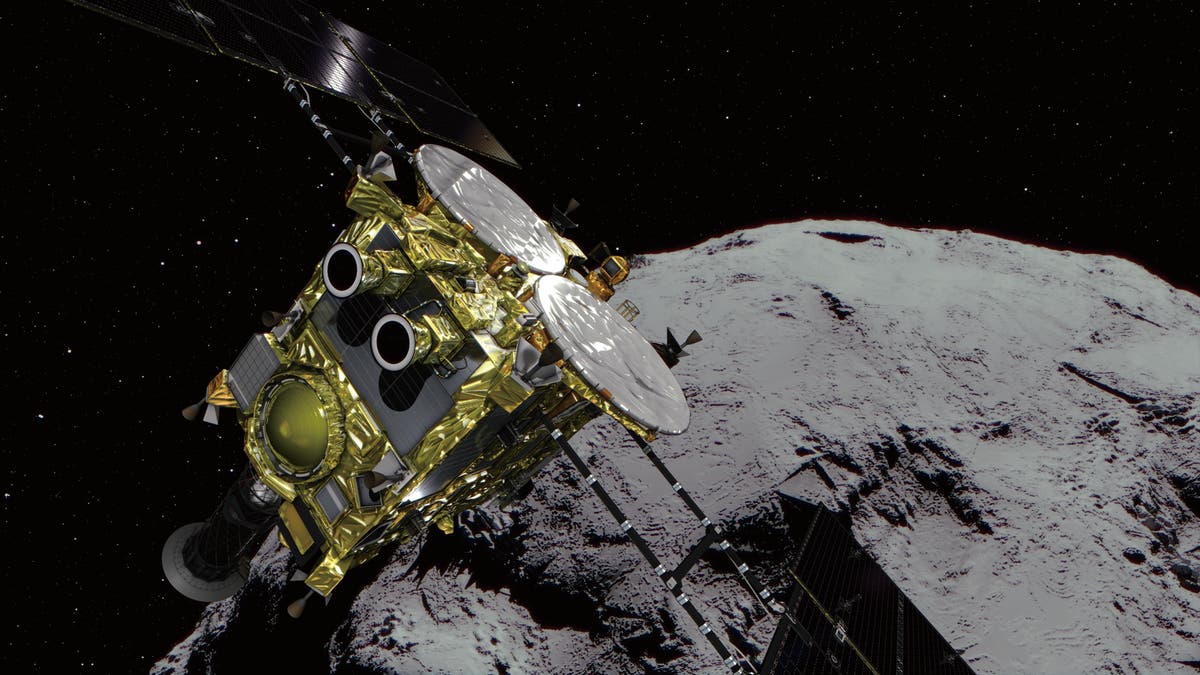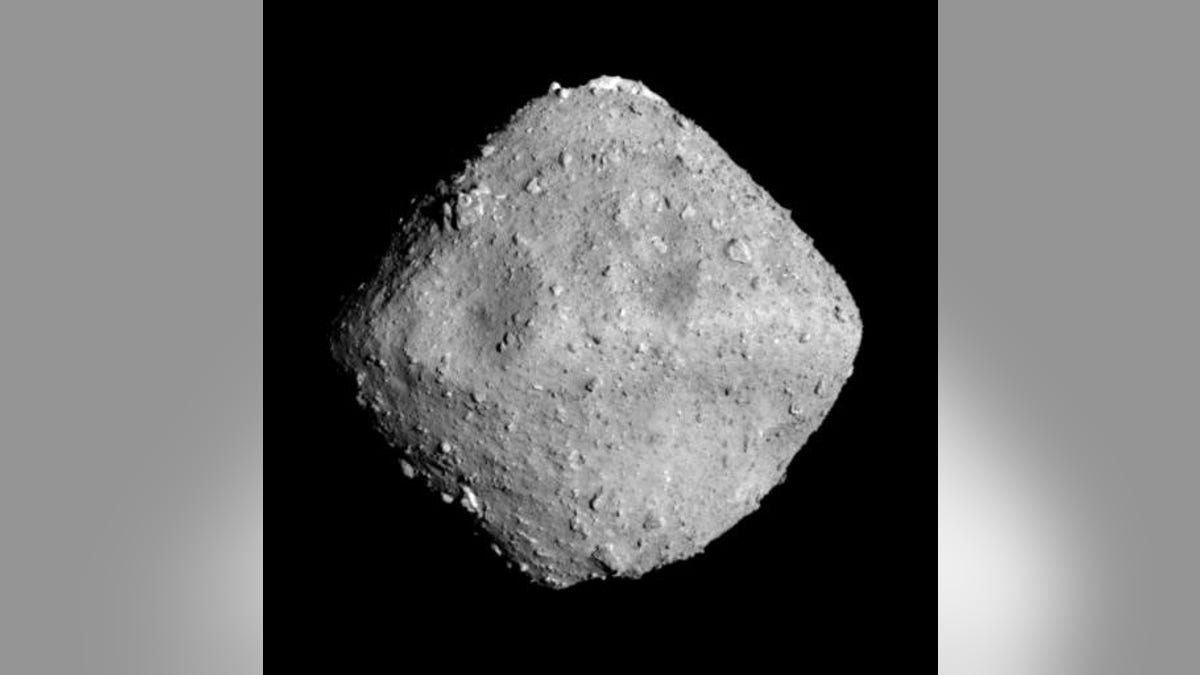
This computer graphic image provided by the Japan Aerospace Exploration Agency (JAXA) shows two drum-shaped and solar-powered Minerva-II-1 rovers on an asteroid. Japanese unmanned spacecraft Hayabusa2 released two small Minerva-II-1 rovers on the asteroid Ryugu on Friday, Sept. 21, 2018, in a research effort that may provide clues to the origin of the solar system. JAXA said confirmation of the rovers' touchdown has to wait until it receives data from them on Saturday. (JAXA via AP)
Japan’s Hayabusa 2 spacecraft has lowered two small rovers onto an asteroid in an epic mission to study the distant space rock.
Preparations have been underway for the landing since the Japan Aerospace Exploration Agency's (JAXA) spacecraft reached the “dumpling-shaped” asteroid in June.
The solar-powered rovers' voltage plunged as night fell on Ryugu, a sign that they are on the asteroid, said Hayabusa project team spokesman Takashi Kubota.
SPACE 'DUMPLING' RENDEZVOUS: JAPAN'S HAYABUSA 2 SPACECRAFT ARRIVES AT ASTEROID RYUGU
In a tweet, the mission said that is working to confirm if there are any images captured from the landing.
"We are very hopeful," project manager Yuichi Tsuda said. "I'm excited about seeing the pictures. I want to see the scenery of space seen from Ryugu's surface."
JAXA said confirmation of the robots' safe touchdown has to wait until it receives data from them on Saturday.

This image provided by the Japan Aerospace Exploration Agency (JAXA), shows the shadow, center left, of Japanese unmanned spacecraft Hayabusa2 over the asteroid Ryugu Friday, Sept. 21, 2018. The Japanese spacecraft Hayabusa2 released two small Minerva-II-1 rovers on the asteroid on Friday in a research effort that may provide clues to the origin of the solar system. JAXA said confirmation of the rovers' touchdown has to wait until it receives data from them on Saturday. (JAXA via AP)
The two MINERVA-II1 rovers, each about the size of a cookie can, are to capture images of the asteroid and measure surface temperatures before a larger rover and a lander are released later. The rovers move by "hopping" up to 15 meters at a time because the extremely weak gravity on the asteroid makes rolling difficult. They can continue jumping as long as their solar panels and power last, JAXA said.
Hayabusa 2 is scheduled to attempt three brief touch-and-go landings on the asteroid to collect samples in hopes of providing clues to the origin of the solar system and life on Earth. Since it arrived at Ryugu, scientists have been looking for suitable landing sites on the uneven surface, and its first attempt is expected in October.
SPACE 'DUMPLING' LOOMS INTO VIEW AS SPACECRAFT PREPARES FOR ASTEROID RENDEZVOUS
The spacecraft is set to release a German-French lander called MASCOT (Mobile Asteroid Surface Scout) carrying four observation devices in early October and a bigger rover called Minerva-II-2 next year.

Illustration of Hayabusa 2 (JAXA)
After a journey of almost 2 billion miles, the Hayabusa 2 spacecraft arrived at Ryugu on June 27 when the asteroid was almost 170 million miles from Earth.
Launched on Dec. 3, 2014, Hayabusa 2’s goal is to retrieve samples from Ryugu.
AN ASTEROID TURNED INTO A BLAZING FIREBALL OVER AFRICA
Hayabusa 2 is expected to leave Ryugu at the end of 2019 and return to Earth around the end of 2020.

Optical Navigation Camera – Telescopic (ONC-T) image of Ryugu, photographed at 12:50 p.m. (JST), June 26, 2018. (Credit: JAXA, University of Tokyo, Kochi University, Rikkyo University, Nagoya University, Chiba Institute of Technology, Meiji University, University of Aizu, AIST)
The mission’s MASCOT lander was developed by the German Aerospace Center (DLR) and the French space agency (CNES).
The spacecraft is the successor to JAXA’s Hayabusa, which landed on asteroid Itokawa in November 2005. Despite being dogged with problems, the mission collected a number of asteroid samples, which returned to Earth with Hayabusa in June 2010.
NASA is also on a mission to retrieve an asteroid sample. The space agency’s OSIRIS-REx spacecraft launched on Sept. 8, 2016, from Cape Canaveral Air Force Station on a journey to near-Earth asteroid Bennu. OSIRIS-Rex is expected to arrive at Bennu on Dec. 3, 2018 and start surveying the space rock.
The spacecraft will return its asteroid sample to Earth in 2023.
The Associated Press contributed to this article.
Follow James Rogers on Twitter @jamesjrogers



















